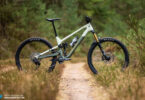Paul ‘Smokey’ Smith: Drifting from tarmac to trails

15,000 mountain bikers descended on Swaledale in the heart of the Yorkshire Dales earlier this month to ride, race and party at the UK’s biggest enduro event, the ‘Ard Rock. Competitors of all walks of life and riding ability took their chances on the brutal trails, some to try and bring home the ‘Ard Rock title but most just to say that they had survived the herculean challenge. Amongst the thousands of competitors was Team Japspeed pro drift driver Paul ‘Smokey’ Smith, who was about to swap tarmac for trails for the first time.
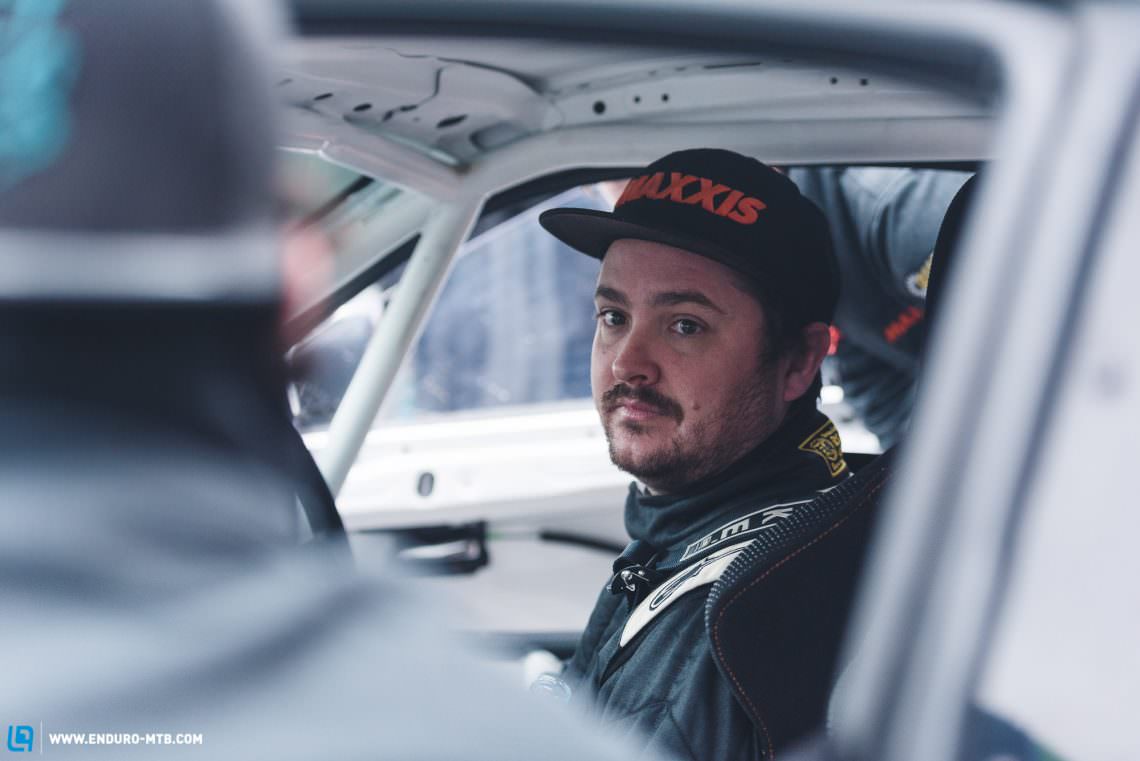
If variety is the spice of life then, for the 2012 Maxxis British Drift Champion, life must be a chicken phall washed down with ginger beer. Not content with owning the asphalt, Smith has decided to try his hand at racing enduro too but how easy is it to go from the race track to off the beaten track? We caught up with Smith at the ‘Ard Rock finish line to find out whether all the drops, dust and dirt were worth it.
What cross over skills do you bring from drifting cars to racing bikes?
The key cross-over skill has to be my quick reactions and being able to adapt instantly to a change in a situation. In drifting, if I’m chasing a lead vehicle and they make a mistake or go slightly off line, I need to react to immediately to take advantage of the error or just avoid crashing into them or losing the car off the track!
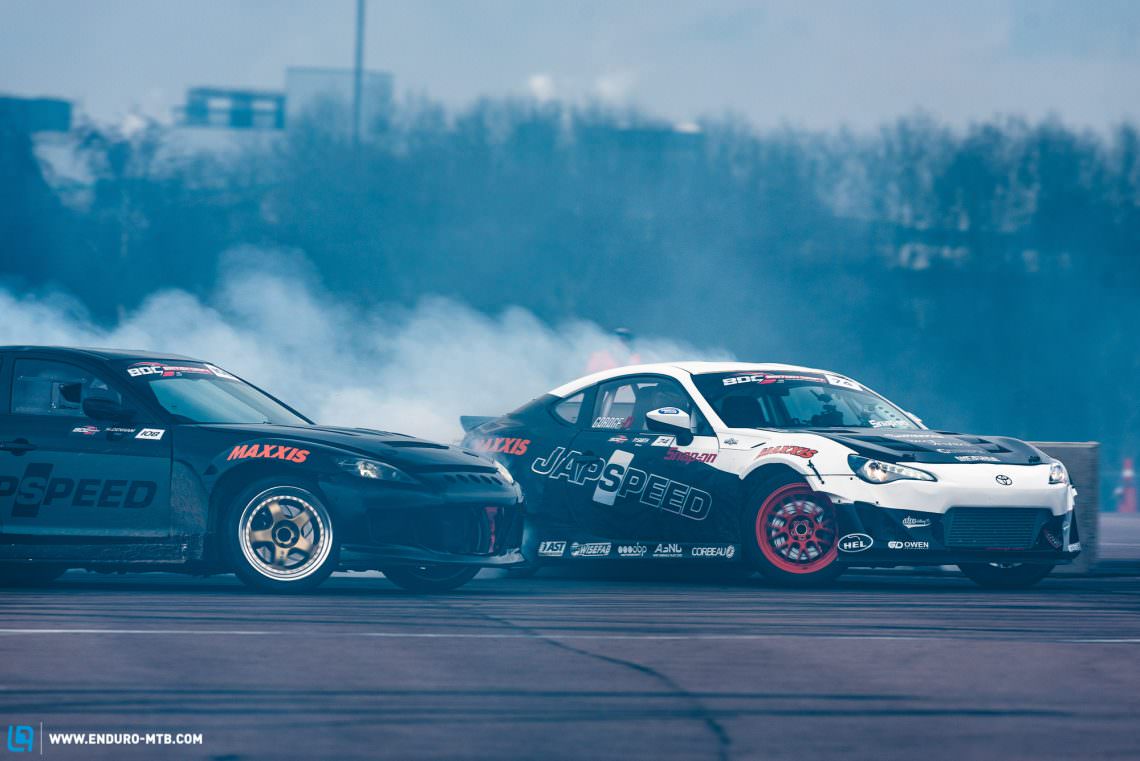
Quick reactions really helps with mountain biking: I was riding most of the ‘Ard Rock stages blind so I had to react quickly as I read the track conditions ahead of me. Even after practising a stage, riders racing ahead of me could knock rocks out of place and cause obstructions on the trail, which I had to respond to and alter my line quickly.
With my drifting, I’m used to competition and an environment where being mentally ready is a big part of being successful. There are a lot of people watching you, which can make some drivers or riders lose their nerve but with twelve years drift competition experience, I am used to the pressure and understand how to keep calm, so I don’t lose my nerve and make silly mistakes.
Also, I think that a good general knowledge of how suspension works has helped in my crossover. Obviously, there’s a difference between drifting on a race circuit where the track is a lot smoother, compared to mountain biking which varies in terrain and is far more rugged. However, the actual principal of how suspension works in relation to rebound and compression is very similar. If your wheels aren’t on the ground, you’re not going to have any grip and you need to make sure your suspension is set up for that. Having an idea of how the mechanics actually work crosses over quite well.
The riders that took on ‘Ard Rock had nerves of steel and I always think if you believe you can do it, you’ll do it, but if you have any doubt in your head, you’re beat already.
How does mountain biking benefit your drifting?
I think the biggest thing has been my fitness. During the training I feel like I’ve become more mentally focused, with more energy and concentration. Honestly, it’s not majorly important to be highly physically fit in drifting, as there are only short-term, what we call battles; a run only lasts 30 seconds and then there’s another 15 minutes rest, so it’s short bursts. Getting through this event has been quite draining with the highs and lows of adrenaline rushes, so I think my mental focus has improved.
When did you start riding mountain bikes and what got you into racing enduro?
I had a short spell of riding probably ten years ago, but only for a few months. Locally, in Spalding, there are no proper mountain bike trails or bike centres because it’s so flat. I enjoyed it but gave it up as I was always having to travel to the same old places, I still have to travel now but as the sport has grown there are so many more great riding options and a much better scene.
I only really learnt about the enduro discipline at the ‘Ard Rock event last year. I mentioned it to Maxxis and said I was quite interested in getting involved, but I couldn’t make the event because I had other commitments through drifting. At the start of this year, when the dates came out, Maxxis asked me whether I wanted to do it and get me trained up by some pro riders. They supplied me with the gear and provided the technical help on the tyres and how to ride the trails. It was an opportunity I couldn’t really let go and that’s how I got into enduro!


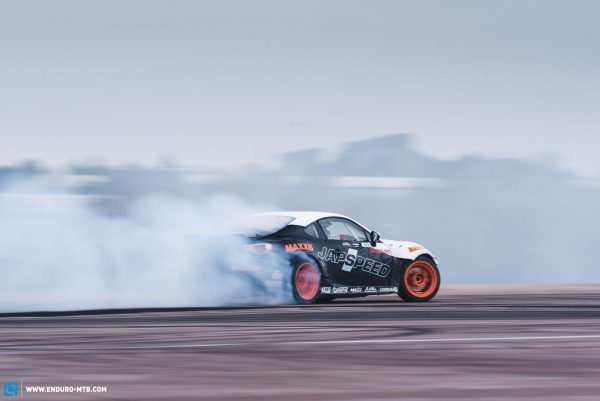
Can you drift a mountain bike as well as you can a car?
Ha! No, I can’t but some people sure can! It’s a lot harder than it looks. It’s very similar to drifting a car. Yes, I can ride a bike, as a lot of people can drive a car but actually drifting it is quite hard. I have seen people do it and it’s definitely something I want to learn. One for the future, with more practise needed!
You’re sponsored by Maxxis for both drifting and enduro. Which of these sports is most obsessed with the tyre set up?
With drifting, we only use one, semi-slick tyre and we just alter the tyre pressure to suit different conditions, whether it’s wet or dry. Whereas, mountain biking and enduro you use a different tyre for almost any condition, wet, dry, rough, etc: there’s so many tyre options to choose from! You’ve got different tread patterns, rubber compounds, wheel size, widths, single layers, DoubleDowns and DH casings, wow! So, I would say enduro is the most obsessed with tyre set up.
What are you running on your bike today and how have you got them set up?
I have a Maxxis Minion DHF on the front and an Aggressor on the back, both are DoubleDown sidewalls and run about 22-23 PSI both ends. The DHF on the front gave me more grip as the trail was super loose and I needed the traction on the corners. The Aggressor is faster rolling and gives you that rolling speed through the quicker sections. You always need more front-end grip than rear-end grip, as that’s what you’re steering with a lot of the time.
Do you approach competing on bikes differently than competing in the car?
Not really, no. I always try to give it everything, whether it’s in my car or on the bike. Again, it’s just being mentally prepared for an event. I knew the weekend was going to be tough and I did the training for it but it was even tougher than I had thought it was going to be! Even with drifting, when I’m coming up to an event, I’ll watch the previous years footage at the same track to try to refresh my memory and I kinda did the same with ‘Ard Rock. I watched a lot of point of view videos from last year to learn a bit of the course and what sort of lines people were taking. It’s about being prepared. Yes, it is fun but I want to take it seriously and I want to do well.
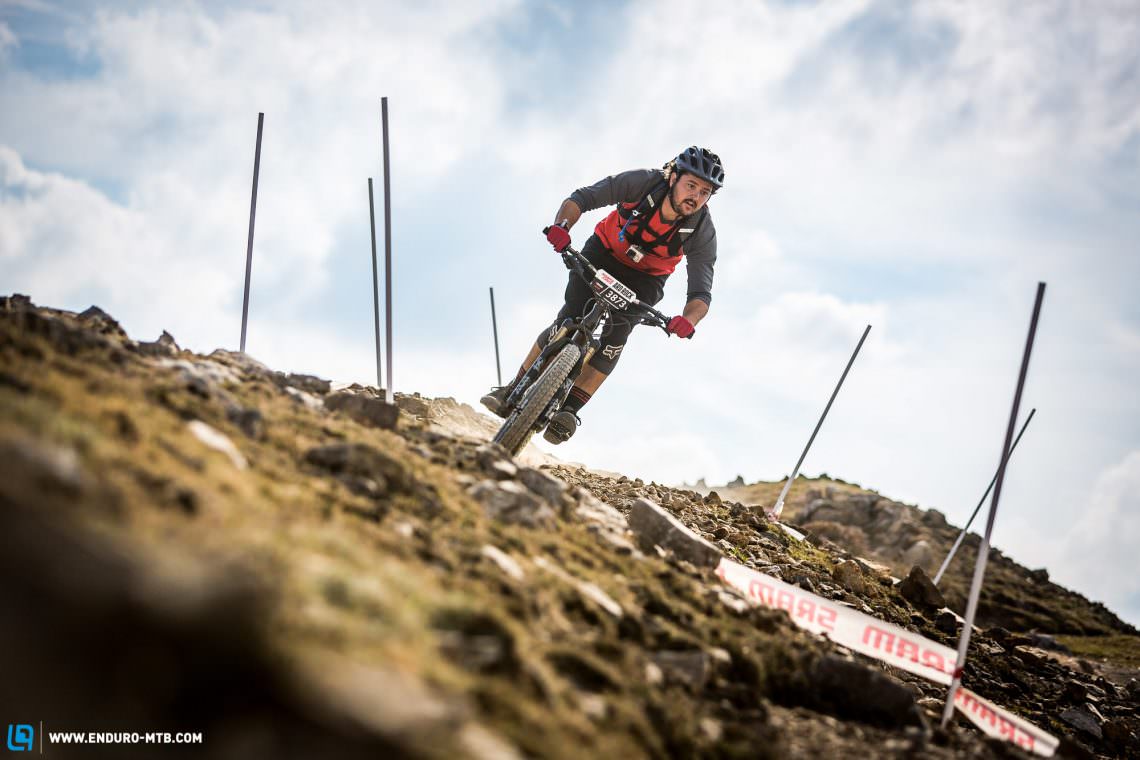
How did you prepare yourself, did you get any coaching or have a training program?
I went to the Forest of Dean to get coaching off of Olly at Pro Ride. I started with the basics, such as balance, position and then we moved onto pumping, squashing and jumping. The Forest of Dean was a very different terrain than ‘Ard Rock. So, we did the training sessions at the Forest of Dean and then about four weeks after, we had a ride up to where ‘Ard Rock is held and did some of the areas up there to get used to the drops and terrain. Then, without Olly, I’ve been getting miles in on the bike, doing cross country loops and going down to some bike parks to do downhill tracks. I’d been trying to get as much riding in as possible but I couldn’t do too much as I still had my drifting to do. If I fell off and injured myself it would obviously affect my drifting, so I had to balance my priorities and get as much saddle time as possible.
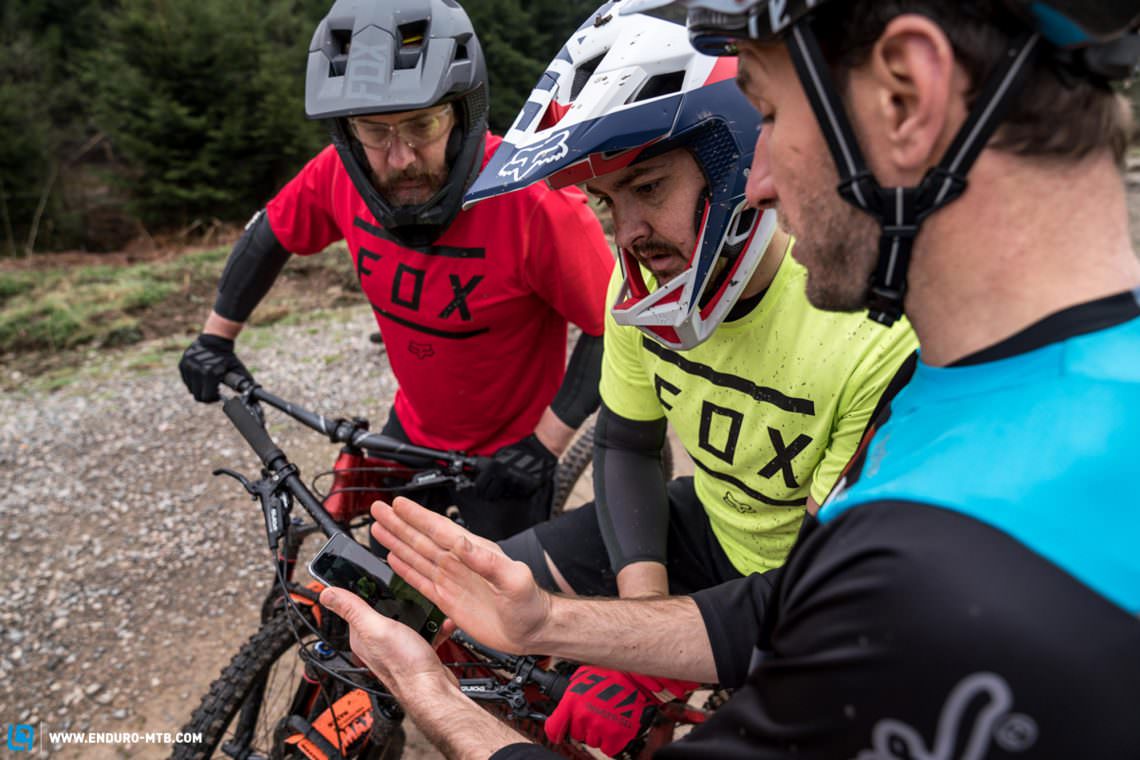
How did you prepare the bike for the race?
It was almost a new bike, so I just had the brakes serviced, the gearings adjusted, and had new tyres put on. Nothing major, no real changes in the settings. I popped over to the Fox stand on the Friday, who helped me set the suspension up. Maxxis gave me support on the tyres and advised me to run a tubeless set up as well, as most riders do now and I had no issues at all.
How did you find ‘Ard Rock?
I thought it was a fantastic event, very well organised and very busy. I didn’t expect the mountain bike scene to be that big and even people that weren’t competing were still there and on their bikes. It was a really good atmosphere and everyone was there for the same reason, to have fun riding.
The hardest thing was the brutal transitions between the stages and the hot weather. The actual stages were fantastic, you’ll never be able to go anywhere else and ride stages like this! I definitely think that the course was more suited to riders of intermediate and above ability. You don’t want to do it if you’re a real beginner without any sort of training. It definitely tests you. There is a wide spectrum of abilities but skill level of riders is brilliant and you’ve got international level competitors like World Downhill champion Steve Peat to race against! They’re people I recognised from YouTube and it’s fantastic to have those top riders riding alongside your local weekend warriors. There are not many sports where you can ride with the world’s best when you’ve just started out. You can’t just learn to drive and then go racing with Lewis Hamilton, can you?
Did you have a favourite stage?
There was a few, Stage one was great because when you came into the wooded area the spectators were really loud and it was a great feeling to be coming down the hill to the cheers of the crowd – you could hear them before you could see them! Stage five and six I really liked, it was very fast and flowed; I could’ve done those tracks all day. Some were scarier than others. Stage two was pretty scary and stage three also. I didn’t know what to expect and it had been an hour ride to Stage one, so it was great just to be able to let it rip down there.
Will you be doing ‘Ard Rock next year and will you be doing anything differently?
I do want to do it again next year. I’ve been talking to Maxxis and they’re keen to have me back. And yes, I will do some things differently. I would speak to a personal trainer to create a program and spend more time in the gym as when the uphill climbs came, they were a struggle. I was wishing that I had an electric bike! I need to find and ride plenty of hills, what with my local area being very flat and focus on the endurance side of things rather than training in short bursts. It’s a long ride, we’d been out about six or seven hours riding and the key to doing well and enjoying it is to have excellent stamina. So, I will be going for longer rides as well as sessioning more extreme bike parks like BikePark Wales to build my technical skills. I also want to say a big thanks to Maxxis, Fox, Canyon, Clif and Olly for his help at Pro Ride. See you next year!
Did you enjoy this article? If so, we would be stoked if you decide to support us with a monthly contribution. By becoming a supporter of ENDURO, you will help secure a sustainable future for high-quality mountain bike journalism. Click here to learn more.
Words: Thomas Corfield Photos: Maxxis







